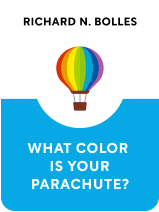

This article is an excerpt from the Shortform book guide to "What Color Is Your Parachute?" by Richard N. Bolles. Shortform has the world's best summaries and analyses of books you should be reading.
Like this article? Sign up for a free trial here .
What are Holland’s six personality types? What do the Holland personality types represent?
Holland personality types represent different people-environments. Every career attracts certain types of people and Holland’s six personality types are a way to categorize that.
Read on for more about the Holland personality types and how to find yours.
Identifying Your Holland Personality Types
The goal of this petal is to figure out the kinds of people you like or don’t like working with, whether they’re people who work at your company or people you interact with as part of your job. This is important because the people around you either give you energy or drain it.
The entries on this petal will be a Holland Code (more on Holland personality types in worksheet #1) and a list of adjectives and/or Myers-Briggs typologies that describe people. Be specific with your entries. An example petal might read: Holland Code—RIS, polite, elderly, Myers Briggs ISTJ, detail-oriented, team players.
There are two worksheets involved with filling out this petal:
Worksheet #1: What’s Your Holland Code?
Dr. Holland came up with the theory that every career attracts certain types of people, or a specific “people-environment.” Therefore, if you can figure out your preferred Holland personality types, that knowledge can direct you towards a specific career.
There are six people-environments or Holland personality types:
- R=Realistic. These people like to do things that are ordered and explicit, such as working with nature, tools, machines, or sports.
- I=Investigative. These people like to do things that use their brains, such as analyzing or investigating things, people, or information.
- A=Artistic. These people like to do things that are creative and free, such as making art.
- S=Social. These people like to do things that involve other people, such as teaching or serving.
- E=Enterprising. These people like to do things that involve manipulating other people, such as sales, leadership, or starting projects.
- C=Conventional. These people like to do things that are detailed and completable, such as administrative work.
The Holland theory says that everyone would have the potential to excel at all six people-environments if our life spans were unlimited, but most of us tend to excel in only three, based on how we grew up.
Your Holland Code is the three letters that represent your preferred Holland personality types. You can find which of Holland’s six personality types suit you in three ways:
- Use the Self-Directed Search tool.
- Use the O*NET Interest Profiler.
- Play the party game. Imagine that you’re at a party and all the guests have arranged themselves into groups based on the six people-environments. Which group are you most inclined to go over to? (Don’t factor in shyness or your ability to join the conversation.) Then, imagine that the group you were talking to all leaves for another party without you. Which group do you approach next? Then, this second group leaves too. Which group are you next-most comfortable with? These three groups are your Holland Code.
Write your Holland Code on Petal #1.
Worksheet #2: Who Energizes or Drains You?
On a scrap piece of paper, create a chart with the following four columns:
| Column A: Jobs you’ve had so far. | Column B: The kind of people you worked with at those jobs that annoyed you. | Column C: Top five worst types of people to work with. | Column D: Top five best types of people to work with. |
| Here, write a list of all the jobs you’ve ever held. | Here, write a list of ten types of people who annoyed you at previous jobs. List them in any order and don’t use names. For example, you might have been frustrated by coworkers who always came in late or were passive-aggressive. | Here, write the top five kinds of people you don’t want to have to work with, in order of priority. Use the prioritizing grid. | Here, write the opposite of the items in column C. You don’t have to write the exact opposite. For example, instead of writing “people who aren’t passive-aggressive,” you might write, “people who are straightforward.” |

———End of Preview———
Like what you just read? Read the rest of the world's best book summary and analysis of Richard N. Bolles's "What Color Is Your Parachute?" at Shortform .
Here's what you'll find in our full What Color Is Your Parachute? summary :
- How to not just find a job, but find a job you love
- Why traditional resumes don’t find you the right job
- The 7 steps to identifying your ideal career






